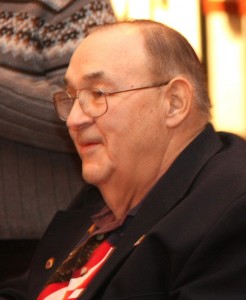The Father (Yes, Father!) of the American Flag
- Share
- Tweet
- Pin
- Share
All Americans, from a very early age, know about Betsy Ross stitching up the first flag for our country (reportedly at the behest of George Washington). The stories of Betsy begin in the very early grades and there are countless picture books telling the story of the first flag. With all due respect to Ms. Ross, however, America hasn’t flown her flag in a very, very long time.
So, between the headline of this column and that first paragraph, I am sure you are breathless to know the story behind the flag that adorns all our flagpoles today, that is on the lapels of our elected officials and millions of patriotic citizens, and that many more millions will clutch and wave as they view the Fourth of July parades in their respective communities. Well, folks, here’s the story.
In 1958 (the year I was born, by the way), both Alaska and Hawaii were closing in on becoming states. Up to this point, our country boasted 48 states, which meant our flag had 48 stars. So with Alaska and Hawaii entering statehood, something was going to have to change on our flag.
Now our story skips back to the year 1942, when Robert G. Heft was born in Saginaw, Michigan. Sometime shortly after his first birthday, Heft’s parents separated and Heft went to live with his grandparents in Lancaster, Ohio. As you will see, this became a key event in Heft’s personal history.
By all reports, Heft was a normal child with a satisfactory, though unremarkable, scholastic career. But in 1958, everything changed for Heft.
In that year, Heft’s history teacher at Lancaster High School, Stanley Pratt, assigned his class the challenge of redesigning the American flag to include the soon-to-be states of Alaska and Hawaii. According to the story that Heft told many times throughout his life, he took an old 48-star flag and invested $2.87 in some blue cloth and white iron-on material. He carefully unstitched the blue field from the old flag and then stitched in his new blue material. He then cut out 100 white stars (50 for each side) and ironed them into place on the new blue field.
Okay, at this point many (if not most of you) are rolling your eyes and saying aloud, “Well, duh!” And apparently, Heft’s history teacher had a very similar reaction because Heft was rewarded with a B- for his effort.
Heft was not satisfied with his grade, however, and – after a discussion with Mr. Pratt – it was agreed that if the U.S. Congress adopted Heft’s design as the new flag, Pratt would consider changing Heft’s grade (talk about a tough teacher!).
And so Heft carefully packaged up his flag, wrote a cover letter, and sent his creation off to President Eisenhower.
American citizens sent more than 1,500 unsolicited flag designs to President Eisenhower and while some of these included just 49 stars, most had 50 stars. At least three of the submissions were identical to Heft’s design (alternating rows of five and six stars).
As you have probably already anticipated, President Eisenhower chose Heft’s flag design from all the designs submitted. According to reports, Heft was the only one who actually submitted a stitched together flag, which sealed his selection. And while I certainly believe there is some credence to this story, I also like to think that President Eisenhower recognized the unfairness of Heft’s teacher, Mr. Pratt.
However, to give Mr. Pratt at least some measure of credit, he did honor his agreement with Heft and, after the announcement of Heft’s design being chosen as our new flag, the grade was changed from B- to an A.
Heft went on to become a high school teacher and later a professor at Archbold Community College in Ohio. He also served as mayor of Napoleon, Ohio, for 20 years. After his retirement he returned to Saginaw and gave motivational speeches where he related the story of his flag design. Heft died unexpectedly on December 12, 2009.
In the interest of full disclosure, I should note that Mr. Heft did copyright flag designs with stars ranging in number from 51 to 60. Thus, should Puerto Rico ever become a state (or Guam, or the Solomon Islands, etc.) our country will face an interesting dilemma: if we do add a state or two to our Union and use a flag with additional stars, do we have to pay Mr. Heft royalties on each and every flag that is used and sold?



